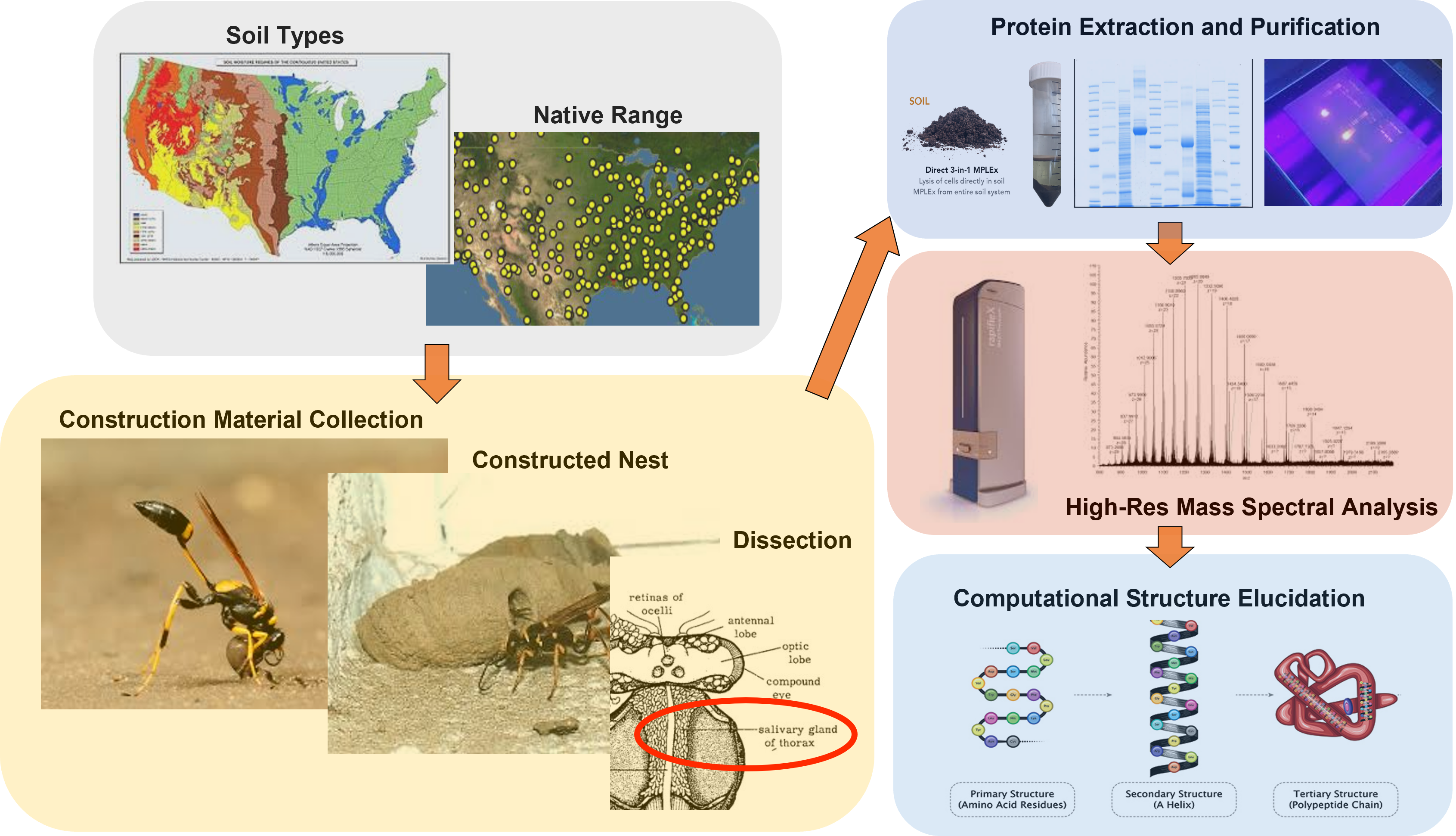(150e) Elucidation of Structural Proteins Used in Construction of Mud Dauber Nests and Caddisfly Cases
AIChE Annual Meeting
2023
2023 AIChE Annual Meeting
Materials Engineering and Sciences Division
Poster Session: Materials Engineering & Sciences (08B - Biomaterials)
Tuesday, November 7, 2023 - 3:30pm to 5:00pm
Mud daubers are capable of constructing water resistant, thermally regulating, and durable nests using structural proteins from their saliva. Although the construction methods, foraging behavior, and the physical and mechanical properties of the mud dauber nests have been widely studied, there is little information regarding the protein composition found within the mud dauber salivary secretions. It is believed that mud daubers secrete salivary mucoproteins to provide adhesive and hydrophobic properties within the nest, allowing them to structurally withstand extreme environmental conditions. This study investigated the presence of mud dauber proteins within the constructed nests, along with analysis of the corresponding soils used during nest construction. Here, we present the development of novel protein extraction and analysis techniques using caddisfly silk samples that contain widely studied structural proteins. The developed workflow was then carried over to mud dauber specimens and nests that were collected across the United States (MS, LA, NC, KS, AR, and MA) to extract and analyze the proteins from dissected salivary glands and nest materials. The metaproteomic extraction method developed for both caddisfly silk, mud dauber salivary gland, and mud dauber nest material involved SDS-phenol extractions and SDS-PAGE gel electrophoresis for size exclusion separation. We used state-of-the-art instrumentation, including MALDI-TOF-MS, XRD, elemental analysis, etc. to elucidate the protein sequence and soil characteristics. The method development presented here can carry over to elucidating protein structures found within the mud dauber saliva and nest materials to provide insight into how these biomolecules provide structural adhesiveness and whether the mud dauber can bio regulate the amount of protein based on different environmental and soil conditions.


